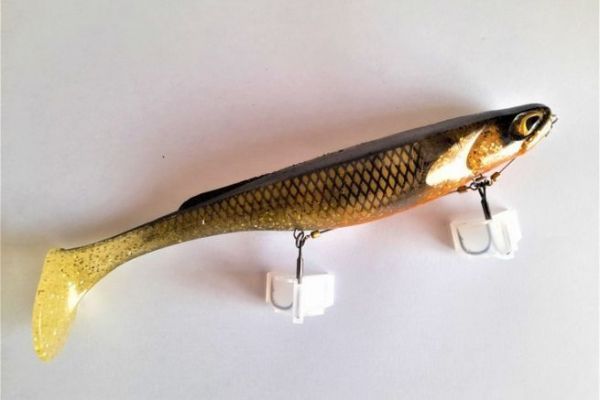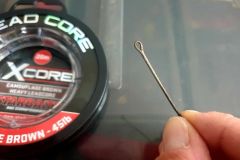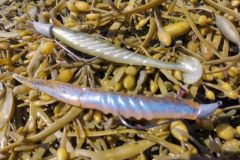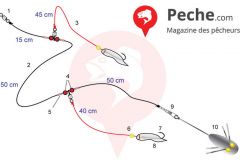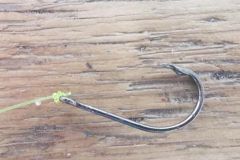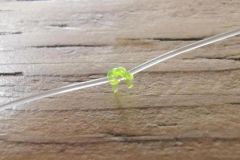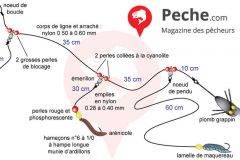Renewed interest
The idea of attaching a soft lure by screwing it onto a small corkscrew made of piano wire is by no means new. This type of mounting has been around for over twenty years without ever really catching on. Today, it is enjoying a clear revival, thanks to the conjunction of two fairly strong trends that didn't exist at the time. The use of modern soft lures, which are now very fragile because they are made of a rubber material hyper-tender and the fashion for large shads (20 to 30 cm) designed for pike fishing.
These two tendencies make mounting on a conventional sinker head problematic. In the first case, with soft lures, it's because after a few catches, sometimes even after the first one, the shank of the single hook shears the body of the lure like butter. The shad can no longer stand on its head and collapses on casting.
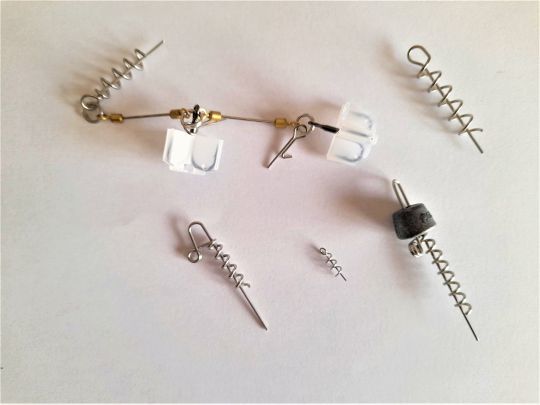
Impaled lure
You can improve things a little by gluing it on when you first set up. But in this case, you lose the ability to change lures at will. In the second case, with a big shad, the lure's solidity is no longer a problem, but there's another one, that of arming. It's not easy to optimally rig a 20-30 cm soft lure with two hooks, as required by law.
The use of a lead head plus treble hook, while possible, is not necessarily the most suitable. Firstly, because it's hard to find lead heads in the weight of your choice with a hook big enough and long enough to properly rig such a lure. When you do find them, they are sometimes difficult to set up, and when you do, it's only to find that the lure thus mounted (impaled would be closer to the truth), is as stiff as justice. You may also want to use these big lures in shallow water, for example in the open water above a weed bed, which requires little or no ballast.
The use of leaded heads is also problematic here, as a large hook is often synonymous with a heavy leaded head. Alternative solutions therefore had to be developed for these specific needs. And that's where our famous corkscrew comes in.
This system is undoubtedly the most solid way of attaching a soft lure. This is because the lure is screwed in place, whereas on a lead head it is held in place by friction alone. Any good handyman knows that a screw holds an assembly much better than a common nail.
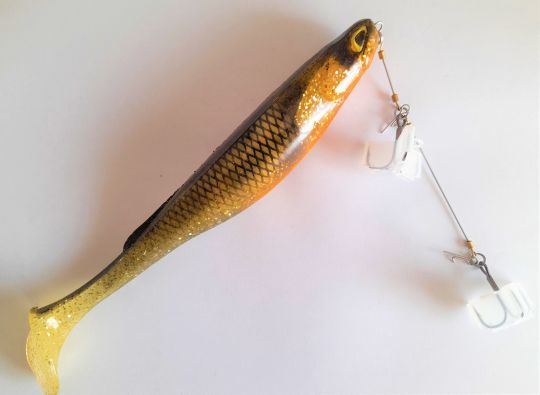
Many advantages
With a corkscrew, there's no settling or slipping possible, it simply can't move or take up play. Another important point concerning the longevity of fragile lures is that, with a screw-head, the armament must be installed from the outside via a stack of one or two treble hooks.
On striking, the lure is detached from the armament and is only remotely subjected to the stresses of combat and contact with the teeth of the predator, whose raging headbutts can easily overcome any gum when the lure remains attached to the hook.
Another big advantage of the corkscrew is that it gives us complete freedom of choice when it comes to positioning the armament, and even the sinker, since these elements can now be dissociated.
In the case of a large swimbait flexible, for example, we can imagine a rig using a corkscrew to secure the lure, two treble hooks (in tandem or independently) that can be placed under the belly or on the back, depending on the circumstances, and a removable ballast to adapt to the chosen depth. On paper, this sounds ideal, but in practice it leads to rather technical set-ups, both to DIY (although ready-made ones are available on the market) and to use.
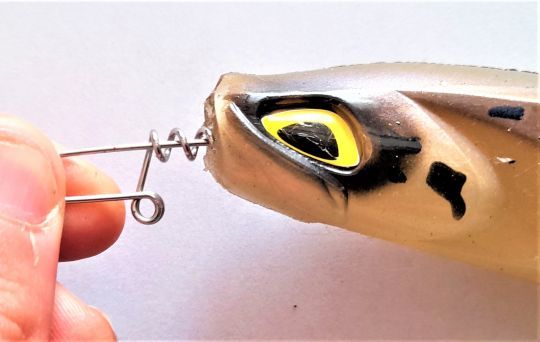
The self-centering axle, a must
A simple twist may be all you need, but self-centering models with a central pin are much easier to set up properly. This pin is inserted into the soft lure in the right direction and screwed in place. The pin prevents the spin from going sideways. Simple but radical. Different sizes are available.
Pros and cons
In short, the corkscrew offers many advantages:
- the lure holds together better and damages much less quickly, especially as the armament disengages on contact
- ultra-simple, quick assembly, easy to remove and replace without damage
- top or bottom baiting, and the ability to place hooks exactly where you want them
- modular ballast (for certain fixtures) or no ballast at all
- greater lure flexibility along its entire length
Of course, it also has its drawbacks:
- more complex and costly installation (jibs)
- risk of weak points if stacks are poorly made and reduced discretion (more visible stacks and hooks)
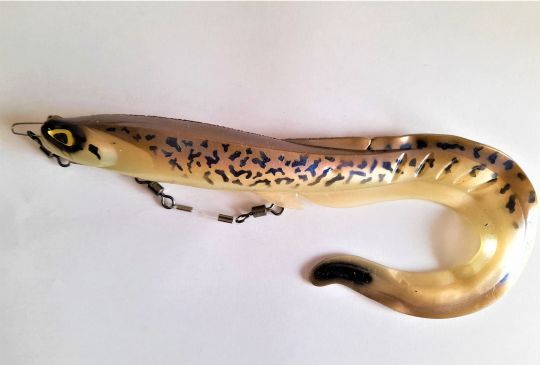
Simple and efficient
So it's up to you to make up your own mind and decide whether to use it or not, depending on the circumstances. But once you've mastered the finer points of stacking, you'll be hooked on its ease of use and efficiency. In some cases with very large soft lures, for example, it's virtually the only viable solution.
